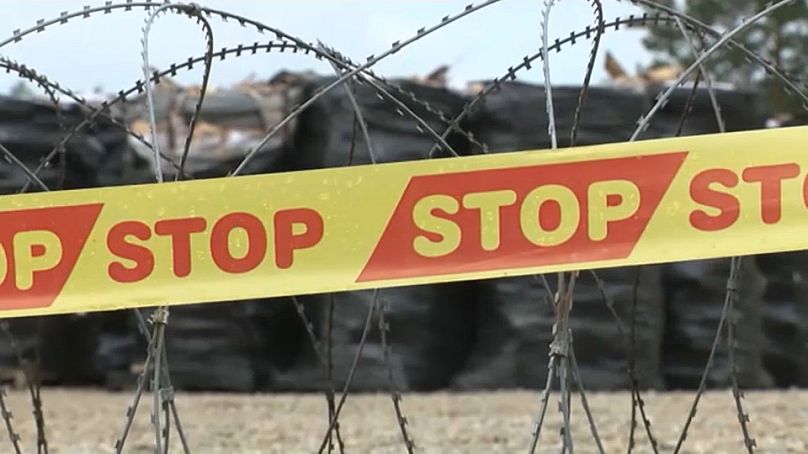The Lithuanian defence line will form a part of the system of fortifications agreed by Baltic defence ministers in January in response to Russia's 2022 invasion of Ukraine.
Lithuania has unveiled what it calls its first counter-mobility park in the country's east, part of the Baltic Defence Line slowly taking shape on NATO's eastern frontier.
The area features roadblocks, various barriers and 'dragon's teeth' anti-tank obstacles.
"If we want to defend ourselves efficiently we have to set up this system. So we are doing this and the entire plan of the Lithuanian defence line that we presented three weeks ago is based on such a systemic approach where physical barriers are integrated with artillery fire coverage," said defence minister, Laurynas Kasčiūnas.
The zone in Pabradė, near the border with Belarus, also includes traditional obstacles like 'hedgehogs' and 'Spanish horses' which can be deployed quickly elsewhere in the case of an attack.
"The war in Ukraine laid bare the staying power of classics. One can talk about air superiority, naval superiority, land superiority and joint warfare - but obstacles, they do their job, they slow down or stop the enemy which allows us to destroy it or channel it somewhere where we will destroy it," chief of defence Raimundas Vaikšnoras told reporters.
In late July, the Lithuanian government green lit plans to implement increased counter-mobility measures, including setting up roadblocks and installing structures for explosives under bridges.
Plans call for setting up counter-mobility equipment parks at locations designated by the army along the border with Belarus in the east and to the west, Russia's Kaliningrad region by April 2025.
While the immediate measures will cost around €17.5 million, the cost of the entire defence system is estimated to require some €600 million over the next decade.
The Lithuanian defence line will form a part of the system of fortifications agreed by Baltic defence ministers in January.
Poland is also set to fortify its eastern border under its own East Shield initiative and construction on Latvia’s first phase of the Baltic Defence Line in the easternmost region of Latgale is under way.
Estonian, Latvian, Lithuanian and Polish leaders signed a letter in June urging the EU to fund an estimated €2.5 billion defence line against military and hybrid threats from the East.
The Baltic States signed an agreement in January to create a common defence line to reinforce NATO's eastern border with both Russia and its close ally Belarus.
Latvia, Lithuania and Estonia were once all part of the Soviet Union but are now part of the EU and NATO and are allies of Ukraine, where Russia launched a full-scale invasion in February 2022.












